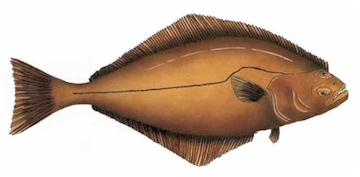American Lobster (2/6)
CRUSTACEANS FOUND TO HAVE SHELLACIOUS APPETITE
By Richard Degener, Staff Writer
Press of Atlantic City, August 11, 2004
Lower Township - Bill Figley wasn't sure what he would find in the stomach of a New Jersey lobster. When he found out, he was stumped. Figley, a marine biologist with the state Division of Fish and Wildlife, discovered lobsters like to dine on the same thing that sends shore vacationers flocking to the best seafood restaurants. For breakfast, lunch and dinner, lobsters prefer lobsters.
The study of the eating habits of lobsters found that 18 percent of a lobster diet is other lobsters. When they aren't eating each other, they are looking for other crustaceans, such as crabs. Together, lobsters and crabs make up 58.8 percent of what a New Jersey lobster eats. "We knew they were cannibals but didn't realize it would be that high. I can't explain why it's so high, " Figley said.
Bergen County resident Thomas Brady, while shopping for fresh lobster Tuesday afternoon at the Lobster House on Schellenger's Landing, presented one possible theory. "They have good taste. If they eat lobster, it must be good, " Brady said. And if they eat lobster, could that be why they taste like lobster? "You are what you eat, so that's why lobsters taste like lobsters, " said Figley. There's no science behind it, but it sounds logical enough. Maybe seafood restaurants should advertise their lobster-fed lobsters.
Lobster House owner Keith Laudeman, who sells more than a half-million pounds of lobsters per year, said the theory sounds plausible. It isn't just the lobsters, but the fact that the diet of lobsters, in general, is prime seafood, such as clams, crabs, and mussels. "Lobsters taste so good because they eat shellfish, " Laudeman theorized. He also said they have tried to eat his workers at the restaurant. That's one reason they use rubber bands to secure the claws. Another reason is something seafood restaurants have known for years but scientists are just figuring out. Given a chance, they dine on each other right in the lobster tanks.
"They eat each other like there's no tomorrow. Even with the bands, they get in there with their little pincers, " said John Oney, an assistant manager at the Lobster House seafood market. The news that lobsters eat lobsters didn't seem to hurt business at the Lobster House. Most customers seemed intrigued. "It's interesting. Cannibalism, " said Richard Oswald of Chesilhurst in Camden County. "That makes them better, " said his wife, Dana.
Figley figures it is mostly a matter of size. Lobsters hang out together and some are larger than others. All are very susceptible when they molt and lose their hard shell. "It's a matter of, 'I'm bigger than you and I'm going to eat you, '" Figley said. He does not believe the study is an anomaly because lobsters were collected for several years at artificial reef sites off the Atlantic and Ocean county coasts. The state collected 98 adult lobsters and sent them to the National Marine Fisheries Service laboratory at Sandy Hook for analysis.
Lobsters tear everything up as they eat, so it took a while to determine exactly what was in their stomachs. "A lobster mouth is like a blender. It was a bit of a detective game, " said Frank Steimle, a biologist at the Sandy Hook lab. The first dilemma was figuring out why their stomachs contained what appeared to be bits of black plastic. It went on the data sheets as "mystery black particles" until it was discovered to be the black cases that hold skate eggs. They make up as much as 12 percent of the lobster diet.
Steimle sorted through a plethora of worms, rock crabs, sea horses, starfish, and various crustaceans, bivalves, gastropods, hydroids, and fish. He was happy he did not find the human hair and cloth fibers he discovered in lobsters when sewage sludge was dumped off the coast almost two decades ago. The dumping stopped off Sandy Hook in 1986, and now the lobsters appear to be back on their normal diet. They're dining out and eating only the best: A lobster dinner at the New Jersey shore.


